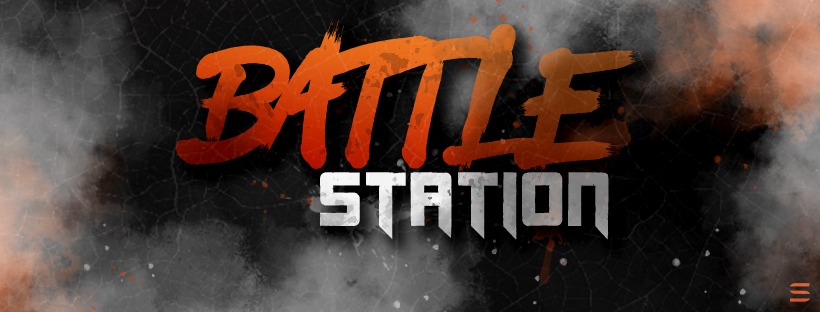Hier die Liste der wichtigsten Hip Hop Alben in der geschichte:
2pac all eyez on me The album is one of the most influential albums in hip hop history[1] and is widely considered one of the crowning achievements of 1990s rap[2]. According to the Recording Industry Association of America, over 9 million copies of the album were sold in the United States by June 18, 1998.[3]
Run-D.M.C.: Run-D.M.C. (Profile, 1984) 1 2 3 6 7 Containing the early singles that saw off the old school, this is considered a superior rap album to any that preceded it.[2]
LL Cool J: Radio (Def Jam, 1985) 1 2 3 5 6 7 Hard, minimalist, self-assertive, and funky, this was a new school blueprint and a b-boy classic.[3]
Run-D.M.C.: Raising Hell (Profile, 1986) 1 2 3 4 5 6 7 Crossover hits like "Walk This Way" co-exist with the quintessential hip hop of tracks like "Peter Piper", "Perfection", "It's Tricky" and "My Adidas".[4]
Beastie Boys: Licensed to Ill (Def Jam, 1986) 1 2 3 5 6 7 9 Licensed to Ill was responsible, along with Run D.M.C.'s Raising Hell, for establishing the hip hop album as a fixture of the mainstream.[5][6]
Boogie Down Productions: Criminal Minded (B-Boy, 1987) 1 2 3 4 5 6 7 Minimalist and tribalist, this album contains the material that won The Bridge Wars.[7]
Eric B & Rakim: Paid in Full (4th & B'way, 1987) 1 2 3 4 5 6 7Paid in Full is minimalist hip hop, with DJ tracks complimenting the precise, logical and influential style of Rakim's raps.[8]
Public Enemy: It Takes a Nation of Millions to Hold Us Back (Def Jam, 1988) 1 2 3 4 5 6 7 8 9 10 Droning feedback, occasional shards of rock guitar, and James Brown horn samples distorted into discordant shrieks back the anti-FBI, pro-Farrakhan political rhetoric of lead rapper Chuck D and the surreality of Flavor Flav.[9]
N.W.A: Straight Outta Compton (Ruthless, 1988) 1 2 3 5 6 7 Powerful and uncompromising, both lyrically and sonically, Straight Outta Compton's first-hand representations of Compton, California life would set the tone for much of future hip hop.[10]
MC Lyte: Lyte as a Rock (First Priority, 1988) 1 2 3 4 5 The treatments Lyte gives rap competitors and ex-boyfriends in classics like "10% Dis", "I Cram to Understand U" and "Paper Thin" make this debut one of the best albums of the era.[11]
Ultramagnetic MC's: Critical Beatdown (Next Plateau, 1988) 1 2 3 4 5 7 Critical Beatdown's abstract rhymes in strange syncopations laid on top of sampling experiments proved widely influential, from Public Enemy to gangsta rap to several generations of underground hip hop artists.[12]
EPMD: Strictly Business (Fresh, 1988) 1 2 3 4 5 6 The slow-moving funk of Strictly Business, with its loud bass and laid-back rapping, was a new sound in hip hop.[13]
Biz Markie: Goin' Off (Cold Chillin', 1988) 1 2 3 4 5 Biz Markie, in singular comedic style, beatboxes, holds forth on the topic of "Picking Boogers", and describes a certain kind of fair-weather friend phenomenon on "The Vapors". Production is by Marley Marl.[14]
The Great Adventures of Slick Rick (Def Jam, 1988) 1 2 3 4 5 10 Slick Rick's roguish tales are noted early narratives in hip hop.[15]
Big Daddy Kane: Long Live the Kane (Cold Chillin', 1988) 1 2 3 4 5 Kane's exemplary boasting is backed by Marley Marl's excellent production.[16]
Jungle Brothers: Straight out the Jungle (Idlers, 1988) 1 2 3 4 10 This debut was an original album containing fluid grooves and nods towards sexual and political egalitarianism.[17]
De La Soul: 3 Feet High & Rising (Tommy Boy, 1989) 1 2 3 4 5 6 7 8 10 An eclectic yet inclusive collage of samples, a benevolent sensibility and an enormous sense of fun made this record a hip hop landmark.[18]
Beastie Boys: Paul's Boutique (Capitol, 1989) 1 2 3 5 6 7 9 " ... one of the high watermarks of the sampling era".[19]
Queen Latifah: All Hail the Queen (Tommy Boy, 1989) 1 2 3 5 Latifah's Afrocentric, charismatic, regal mien projected a new and original persona onto the world of hip hop.[20]
Jungle Brothers: Done by the Forces of Nature (Warner Bros. Records, 1989) 1 2 3 5 The second album by the Jungle Brothers is an inclusive outing: "the most all-embracing hip-hop ever made".[21]
A Tribe Called Quest: People's Instinctive Travels and the Paths of Rhythm (Jive, 1990) 1 2 3 10 Rich and infectious, this debut wore the worthy intent of its morality plays, allegories and explorations of ambiguity lightly.[22]
Public Enemy: Fear of a Black Planet (Def Jam, 1990) 1 2 3 6 7 Fear of a Black Planet, containing the singles "Fight the Power" and "Welcome to the Terrordome", was the similarly incendiary follow-up to It Takes a Nation of Millions to Hold Us Back.[23]
Ice Cube: AmeriKKKa's Most Wanted (Priority, 1990) 1 2 5 7 10 The music keeps pace with the raps on Ice Cube's album of alienation and rage.[24]
Poor Righteous Teachers: Holy Intellect (Profile, 1990) 1 2 4 5 Mystic Islam offshoot The Nation of Gods and Earths had a strong presence in hip hop at this time; Holy Intellect had bouncing funk and ragga influences to sugar the pill of the messages.[25]
Brand Nubian: One for All (Elektra, 1990) 1 2 3 4 As above, this was another Five Percenter album that was an impressive work of sound.[26]
X-Clan: To the East, Blackwards (Ruthless, 1990) 1 2 4 5 X-Clan mixed Egyptology with their Islamic teachings, creating catchphrases still resonant in hip hop today in the process.[27]
A Tribe Called Quest: The Low End Theory (Jive, 1991) 1 2 3 4 5 6 7 "The album demonstrated that hip-hop was an aesthetic every bit as deep, serious and worth cherishing as any in a century-plus of African-American music".[28]
De La Soul: De La Soul Is Dead (Tommy Boy, 1991)1 2 3 5 7 Following the success of their debut, De La Soul killed off their hippy image, producing this sometimes frustrated, sometimes uplifting album with rich grooves in both moods.[29]
Main Source: Breaking Atoms (Wild Pitch, 1991) 1 2 3 5 Something of a lost classic (it sold only 130,000 copies on release despite critical praise, before becoming unavailable), Breaking Atoms is noted for introducing both Nas and Akinyele, for its clever production (by Large Professor) and for its sophisticated storytelling in tracks like "Peace Is Not The Word To Play" and the metaphor for racism that was "Just A Friendly Game Of Baseball".[30]
Gang Starr: Step in the Arena (Chrysalis, 1991) 1 2 3 10 Gang Starr are one of the most consistent groups in hip hop, and one of the greatest. DJ Premier's production here was a leap forward in hip hop techniques.[31]
Scarface: Mr. Scarface is Back (Rap-A-Lot, 1991) 1 2 3 5 Scarface's skillful rapping about the thug and hustler lifestyles includes reflecting on their consequences.[32]
Cypress Hill: Cypress Hill (Ruffhouse/Columbia, 1991) 1 2 3 4 5 Sardonic and menacing, marijuana-toking Cypress Hill's debut had B-Real's unmistakable nasal-whine delivery and extraordinary beats on this commercially successful record.[33]
Dr. Dre: The Chronic (Death Row, 1992) 1 2 3 5 6 7 10 The era of wide-scale sampling would draw to a close in the wake of this hugely successful and hugely influential record, which used live band "interpolations" to create a slow, laid-back music which formed the background to raps of chilling violence.[34]
The Pharcyde: Bizarre Ride II the Pharcyde (Delicious Vinyl, 1992) 1 2 3 4 5 10 L.A.'s The Pharcyde made an album that was a carnival of fun and inventiveness that still made time for some disarmingly honest introspection.[35]
Redman: Whut? Thee Album (Def Jam, 1992) 1 2 4 5 Zapp and P-funk form the basis of beats that are tough, raucous fun, much like Redman himself.[36]
Wu-Tang Clan: Enter the Wu-Tang (36 Chambers) (Loud, 1993) 1 2 3 4 5 6 7 8 One of hip hop's true landmarks, this ferocious, startling album rescued New York hip hop in a time dominated by the relaxed sounds of the West Coast.[37]
Snoop Doggy Dogg: Doggystyle (Death Row, 1993) 1 2 3 5 The star of The Chronic, with his laid-back drawl, made the best-selling debut album ever.[38]
Souls of Mischief: 93 'til Infinity (Jive, 1993) 1 2 3 5 There were hazy jazz samples, a bohemian air and a torrent of rhymes on the classic debut record from Souls of Mischief of East Oakland, California.[39]
Nas: Illmatic (Columbia, 1994) 1 2 3 5 6 7 Illmatic demonstrated a fitting of production to lyrics worthy of It Takes a Nation of Millions to Hold Us Back, an analytical evocation of street life that matched the power of N.W.A., and a command of the microphone not heard since Rakim.[40]
Common Sense: Resurrection (Relativity, 1994) 1 2 3 4 5 "I Used To Love H.E.R." is an extended metaphor for hip hop that attracted much attention, while on tracks like "Resurrection" and "Watermelon" Common's style is warm and witty, the tracks full of wordplay and assured jazzy production.[41]
Notorious B.I.G.: Ready to Die (Bad Boy, 1994) 1 2 3 5 6 This album's platinum sales, rap skills, and bleak vision mitigated by humor and funk, completed the revitalization of New York hip hop begun with the success of the Wu-Tang's debut a year before.[42]
Organized Konfusion: Stress: The Extinction Agenda (Hollywood Basic, 1994) 1 2 3 5 Challenging but occasionally joyful music that demonstrates virtuosity even at its most difficult, this is noted not least for a gruesome narrative told from the perspective of a titular "Stray Bullet".[43]
Mobb Deep: The Infamous (Loud, 1995) 1 2 3 4 5 " ... a bone-chilling classic of Rotten Apple hardcore".[44]
Raekwon: Only Built 4 Cuban Linx... (Loud, 1995) 1 2 3 7 Raekwon's grim street tales made for one of the best Wu-Tang solo records.[45]
The Fugees: The Score (Ruffhouse, Columbia, 1996) 1 2 3 4 6 Massive singles aside, this was a dark, downtempo album; it sold over 18 million copies worldwide and was widely respected.[46]
Jay-Z: Reasonable Doubt (Roc-A-Fella, 1996) 1 2 3 5 6 Jay-Z combined elements of the New York underground with a mainstream sensibility on his debut, proving himself a strong presence on the mic in the process.[47]
Outkast: Aquemini (Laface, 1998) 1 3 5 7Critical, analytical and emotionally intelligent, Aquemini was ambitious and successful both musically and lyrically.[48]
Lauryn Hill: The Miseducation of Lauryn Hill (Ruffhouse/Columbia, 1998) 1 3 5 7 Soaring music and Hill's voice, rapping or singing, made this among the most successful crossover albums of the hip hop era.[49]
Eminem: The Slim Shady LP (Aftermath/Interscope, 1999) 3 5 6 8 This contains some Dr. Dre productions and Eminem's deliberately offensive wordplay; the huge single "My Name Is" is an example of both.[50]
Jay-Z: The Blueprint (Roc-A-Fella, 2001) 3 5 6 7 8 Jay-Z was at the zenith of his talents over excellent production by Kanye West, Just Blaze and others.[51]

